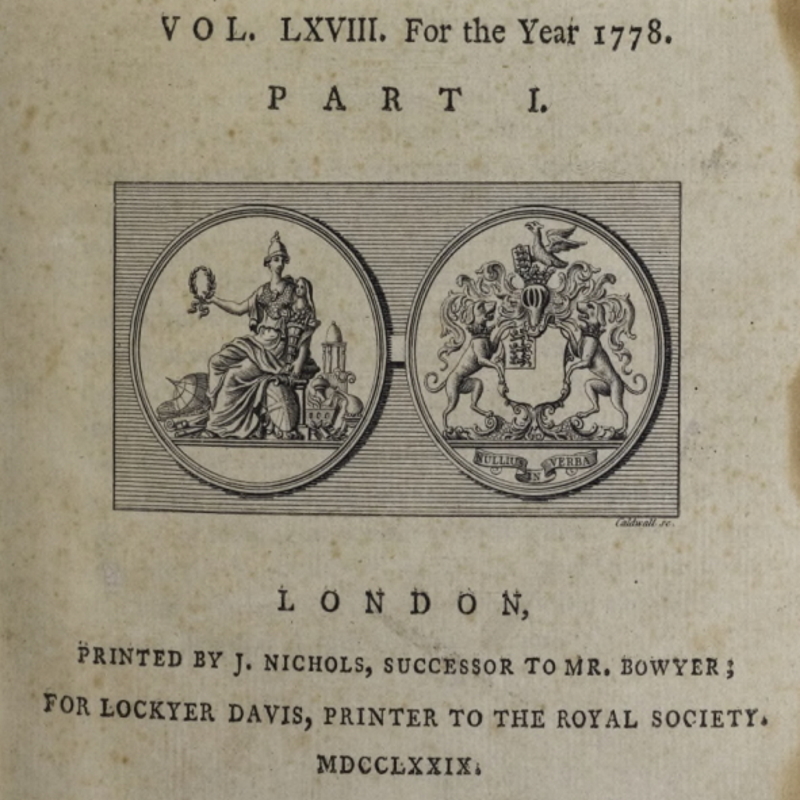Jon Bushell tells the story of the Royal Society's involvement with the Aldabra Research Station, which celebrated its 50th anniversary in 2021.
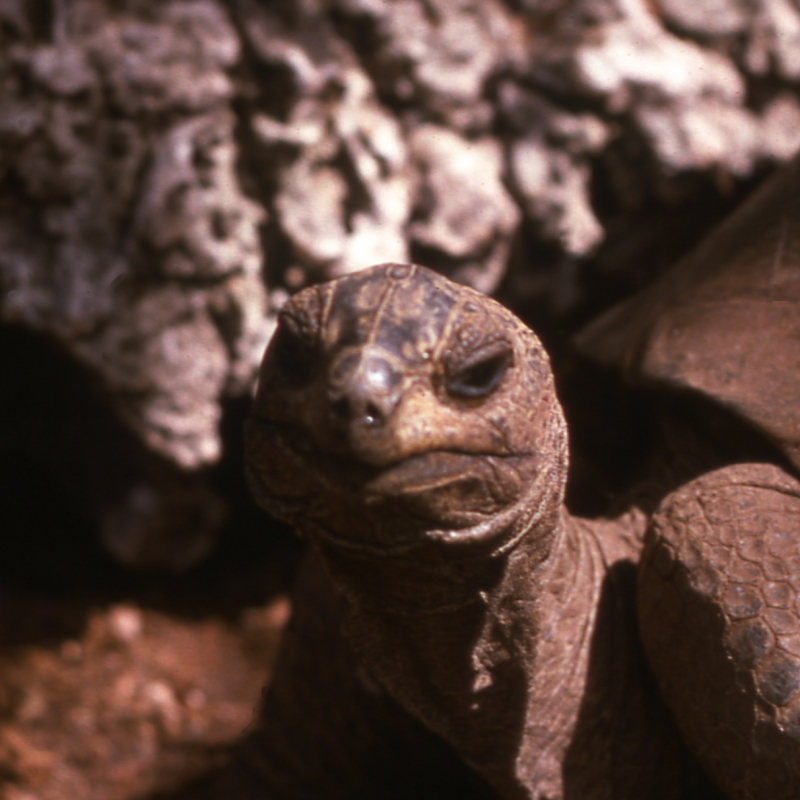
Last month the Royal Society hosted the Aldabra Research Station 50th Anniversary Celebration Symposium. The event, slightly delayed from last winter due to COVID restrictions, marked half a century since the opening of the Royal Society’s research base on the atoll.
Aldabra is part of the Seychelles archipelago in the Indian Ocean and is the world’s second-largest coral atoll. The Royal Society operated the station there for most of the 1970s, hosting scientists studying the local ecology. It’s still in operation today, now under the management of the Seychelles Island Foundation (SIF).
 The visitor’s block of the Royal Society research station on Aldabra, c.1972. From our image collections.
The visitor’s block of the Royal Society research station on Aldabra, c.1972. From our image collections.
To understand how the Royal Society came to a coral atoll some 5,000 miles away from London, we need to look back to the 1960s. At the time, Aldabra was part of the British Indian Ocean Territory, having passed into British administration from the French in the early nineteenth century. Commercial hunting and fishing across the atoll had reduced several indigenous species to critically low numbers by the turn of the twentieth century. Restrictions on these practices eventually came into force, helping to spark some ecological recovery, particularly following the Second World War. However, proposed developments in the mid-1960s threatened the delicate ecosystem once again.
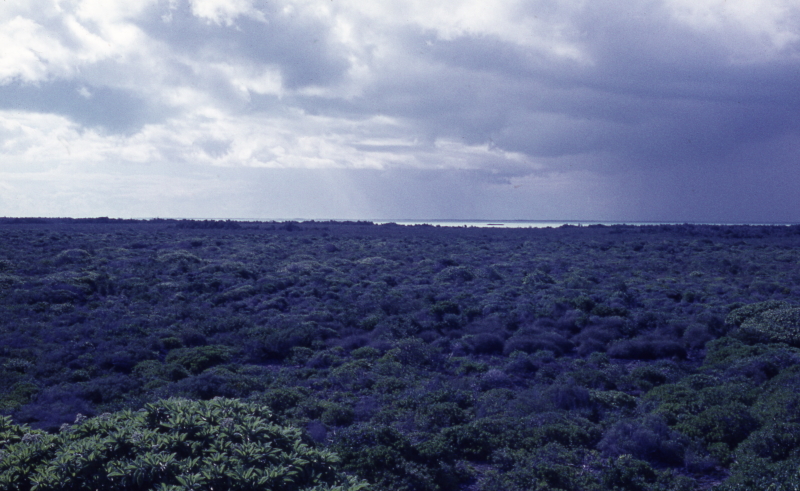 The terrain of Aldabra is thick with vegetation, c.1975. From MS/941.
The terrain of Aldabra is thick with vegetation, c.1975. From MS/941.
The UK government had decided that Aldabra was their preferred location for a new Royal Air Force base. The project had backing from both the British and United States military, as well as the BBC who were looking to establish a new transmission tower at the site but met with strong resistance from the international scientific community. The Royal Society arranged for two scientists, Dr David Stoddart of Cambridge University and Dr Chris Wright from the Natural History Museum, to visit Aldabra with the military and BBC survey teams in 1966 and make a preliminary report on the island’s ecology.
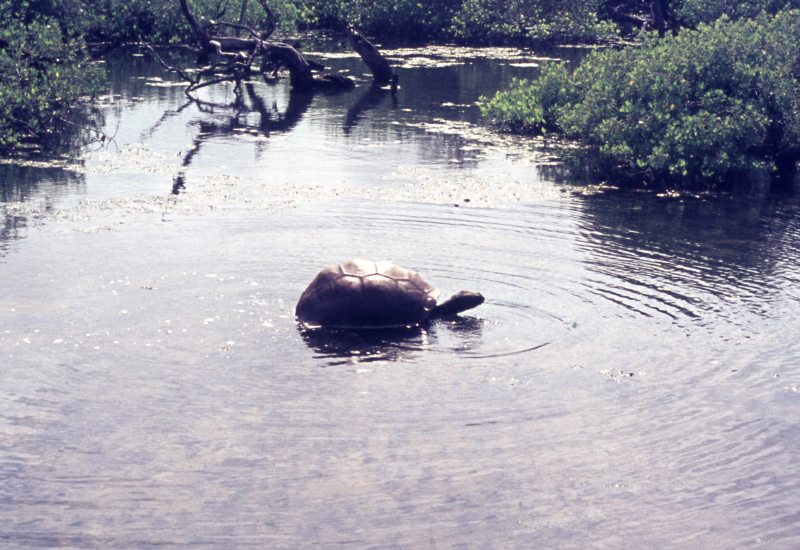 A giant tortoise bathes in one of the lagoons, c.1975. From MS/941.
A giant tortoise bathes in one of the lagoons, c.1975. From MS/941.
Based on their findings, the Society was determined to oppose the plans for the airbase. A strongly worded press release from February 1967 stated:
‘The island offers unique possibilities for scientific investigations … The proposal for the airfield involves developments over a large part of the island which would cause considerable changes in animal and plant life and almost certainly the extermination of at least one interesting bird species – the flightless rail’.
The rail was far from the only species under threat, however. Aldabra giant tortoises and sea turtles would have been hugely affected by the loss of grazing and nesting sites. There was also a high risk to aircraft from bird strikes, and several species, particularly the frigatebirds that nest annually on Aldabra, would almost certainly have been culled.
 The Aldabra rail, happily not exterminated. From our image collections.
The Aldabra rail, happily not exterminated. From our image collections.
While the debate over the future of Aldabra rumbled on in 1967, the Royal Society organised a much more extensive expedition to follow up on the work from the 1966 survey, with Dr Stoddart placed in charge. Ongoing survey work was regularly sent back to the Society, who were able to use it to reinforce the case for the abandonment of the proposed airbase. As the backlash against the plan continued to grow, and projected costs spiralled as more detailed survey work was completed, the government finally admitted defeat and decided in November 1967 not to proceed with development on Aldabra.
For the Royal Society, this presented a golden opportunity. The early reports from the expedition team, several of whom were still on the atoll when the plans were dropped, were incredibly promising and highlighted the scientific value of longer-term ecosystem study. The Society’s Expeditions Office drew up plans for a more permanent research station to be constructed, and an appropriate site was picked out in consultation with the Seychelles government, to serve the expedition’s scientific aims while also minimising the environmental impact of construction.
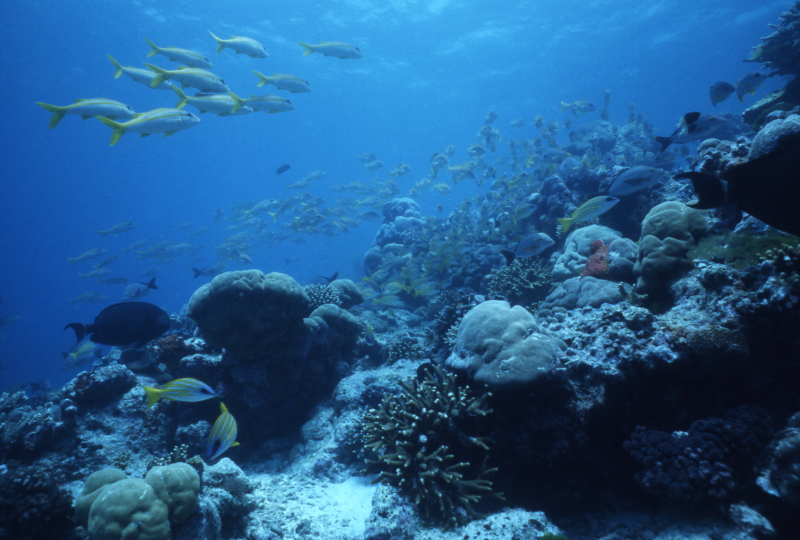 Fish swimming around the coral in the waters off Aldabra, c.1976. From our image collections.
Fish swimming around the coral in the waters off Aldabra, c.1976. From our image collections.
Building work began in 1969, with the station finally completed in June 1971. While this was all taking place, scientific studies of Aldabra had continued largely uninterrupted since the arrival of the initial team in 1967. Exploratory investigations took in everything from the island’s climate and geology to its vegetation, marine life, birds, animals and insects. Over the next decade the research station would host dozens of scientists from British, European, and American institutions. Support staff were also sent out by the Royal Society, and the entire endeavour was supported by local Seychellois Aldabrans who assisted with research, specimen collection and maintenance of the station itself.
 Dr David Stoddart (fourth from right) with the local Seychellois who were living and working at the research base, taken during his visit in 1976. From our image collections.
Dr David Stoddart (fourth from right) with the local Seychellois who were living and working at the research base, taken during his visit in 1976. From our image collections.
With a permanent base in place, long-term research goals were drawn up by the Society’s Aldabra Research Committee, chaired by geologist Thomas Stanley Westoll FRS. Unsurprisingly, top of the objectives list was a comprehensive study of the Aldabra giant tortoise, one of only two surviving species alongside those found on the Galápagos Islands. Those on Aldabra were driven to near extinction by the late nineteenth century, but conservation measures thankfully allowed their numbers to recover, and by the end of the 1970s the population was estimated to be around 150,000. Investigations focused on studying their behaviour and tracking population distribution across the various islands of the atoll.
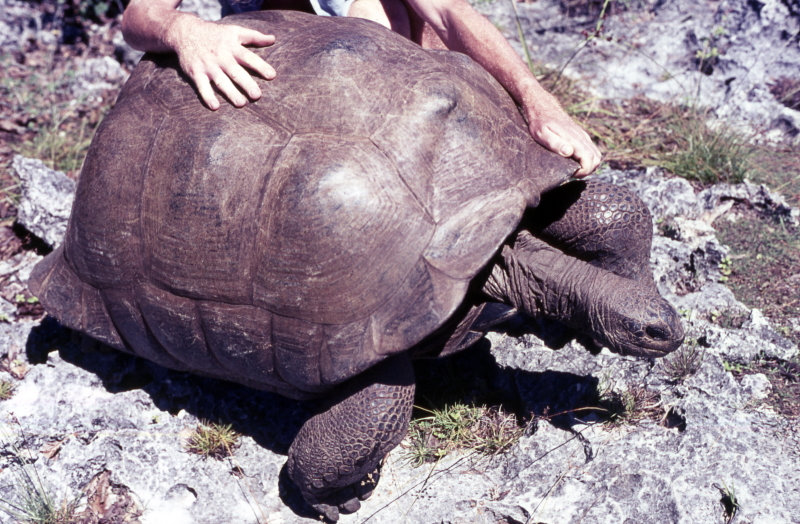 A researcher handling an Aldabra giant tortoise, c.1975. From MS/941.
A researcher handling an Aldabra giant tortoise, c.1975. From MS/941.
Giant tortoises may have been high on the priority list for study, but scientific research on Aldabra was wide-ranging. Over 120 papers were published as a result of research undertaken between 1969 and 1980, and we have copies of most of these in our Library collections. These were published in various outlets, with many appearing in Royal Society journals, and discussion meetings were held at the Society in 1969 and 1977.
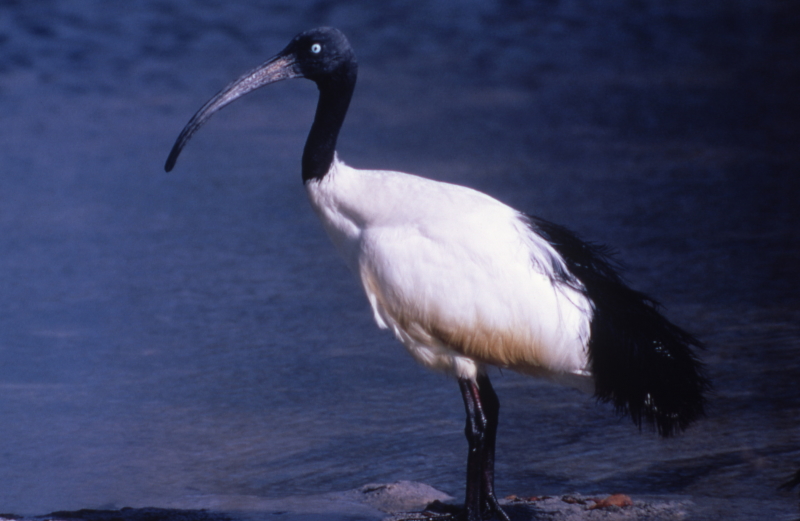 Aldabra sacred ibis. From our image collections.
Aldabra sacred ibis. From our image collections.
By the time of this second meeting, talks were underway as to the future of the research station beyond the 1970s. In 1976 the Seychelles became an independent republic, meaning Aldabra was no longer a British territory. After a few years of discussions, control of the station was formally handed over in 1979 to SIF, a newly formed organisation tasked with continuing the scientific research programme and ensuring that Aldabra was conserved for the future.
The recent anniversary symposium here in London included valuable contributions from SIF and many of the researchers still active on the atoll today. SIF’s ongoing efforts are protecting Aldabra for the future, building upon the foundations laid by the Royal Society in the 1970s. To highlight just one example, in March this year research was published highlighting the success that long-term protection has had on the green turtle population.
It’s hard to imagine that such conservation efforts would have been so successful, or even possible, had the British government pressed ahead with their airfield plans. As one correspondent with the Royal Society put it, upon hearing of the decision in 1967, ‘It is good to know that protests do work when properly organized!’


